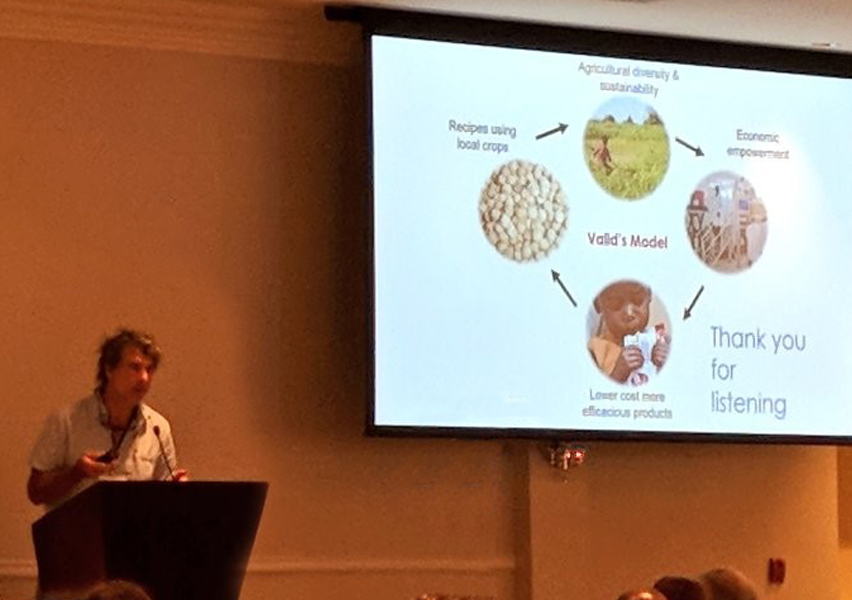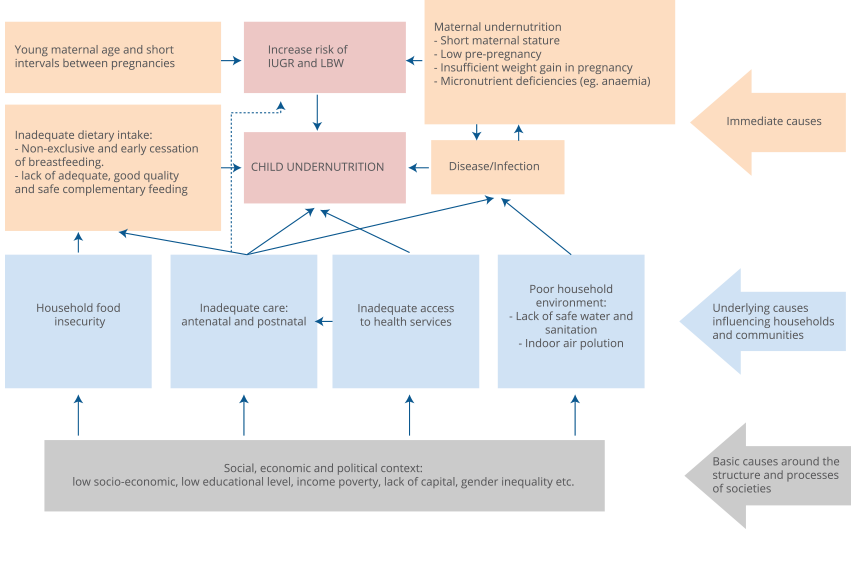Malnutrition: Definition | Causes | CMAM
Causes
Malnutrition occurs when an individual’s nutrient intake fails to meet their nutrient demand. This mismatch is the result of an extremely complex range of diverse interconnected factors that decrease nutrient intake and/or increase nutrient requirements.
The Conceptual Framework of Malnutrition (see figure on the right), initially developed by UNICEF, reflects the various factors, how they interact and affect nutritional status.
The immediate causes are related to dietary intake and to health. The underlying causes include household food insecurity, inadequate care and access to health services, and poor household environment. The basic causes of undernutrition are rooted in poverty and involve interactions between social, economic, and political contexts.

Dr Steve Collins reflects on the opportunities and problems associated with the USD$250 million contribution announced by Administrator, Samantha Power of USAID – a positive catalyst for change?

VALID commissioned and achieved peer-review of a professional report to quantify objectively the overall climate impact profile of the amino-acid enhanced, plant-based RUTF recipe. It has found that the overall global warming potential impacts of the plant-based RUTF recipe are 47%-52% less than the milk-peanut based recipe.

Dr Steve Collins gives a hugely informative and enlightened interview to ENN podcast while discussing his candid Reflections on the UN Global Action Plan on Wasting.

